Mit wenig Zeit möglichst günstig und gesund essen – ein Trend aus den USA verspricht genau das. Denn im stressigen Alltag kommt eine ausgewogene Ernährung oft zu kurz. Stattdessen greifen wir zum Beispiel in den Mittagspausen häufig zu Fastfood oder ungesunden Snacks, um unseren Heißhunger zu stillen. In diesem Artikel erfahren Sie, was es mit Meal Prep auf sich hat, worauf Sie beim Meal Prepping achten sollten und wie Sie einen smarten Meal Prep Wochenplan erstellen können.
Was genau ist Meal Prep?
Meal Prep ist die Abkürzung für Meal Preparation, was im Deutschen so viel wie Essensvorbereitung bedeutet. Die Idee dahinter ist, dass Sie Ihre Lieblingsspeisen in größeren Mengen vorkochen, damit sie in den folgenden Tagen zum Verzehr bereitstehen und in wenigen Minuten aufgewärmt oder fertiggestellt werden können.
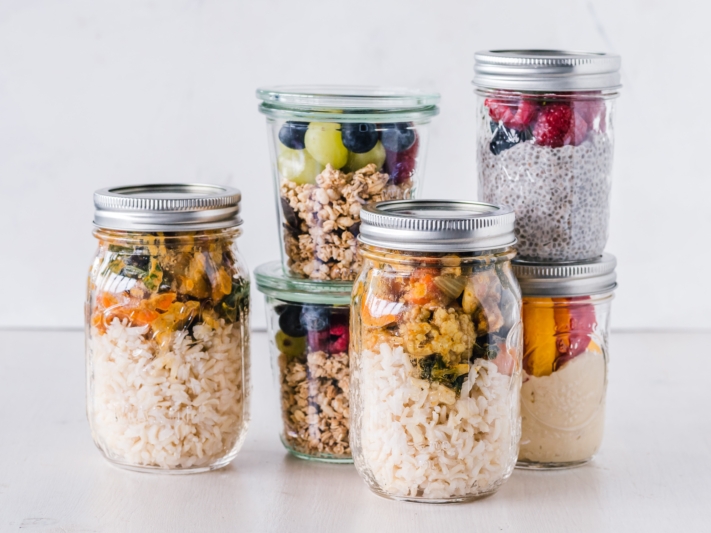
Aus wenigen Zutaten werden verschiedene Speisen gezaubert.
Woher kommt der Meal Prep Trend?
Wie viele Food Trends kommt der Hype ums Meal Prepping aus den USA. Dort wurde Meal Prep vor allem von Fitness-Liebhabern genutzt, hat aber auch schnell Anwendung in allen Lebensbereichen gefunden.
Für wen ist Meal Prep geeignet?
Besonders für Menschen, die in ihrem Alltag nicht die Zeit für ein selbstgekochtes Essen finden, lohnt es sich, Meal Prep auszuprobieren. Es hilft auch, Ernährungsvorsätze einzuhalten und die Selbstdisziplin zu stärken. Natürlich braucht es etwas Überwindung und genug Motivation, um sich an die neue Art des Kochens heranzutrauen, im Endeffekt kann es die Ernährung aber effizienter, gesünder und günstiger machen.
Für wie viele Tage kann man Gerichte vorkochen?
Es gibt zwei Möglichkeiten, wie Sie Meal Prep betreiben können. Entweder Sie kochen die doppelte Menge, sodass das Essen für den nächsten Tag reicht, oder Sie gehen einen Schritt weiter, nehmen sich Zeit zum Vorkochen der einzelnen Zutaten und können diese dann an den folgenden Tagen nach Belieben kombinieren.
Vor- und Nachteile von Meal Prep
Meal Prep hat einige unschlagbare Vorteile – sowohl gegenüber dem täglichen Kochen frischer Gerichte als auch gegenüber Fertiggerichten aus dem Supermarkt oder vom Take-away-Restaurant.
Die Vorteile:
- Spart Zeit: Sie müssen nicht jeden Abend stundenlang in der Küche stehen, sondern können Ihre Mahlzeiten für mehrere Tage zubereiten und in verschiedenen Varianten kombinieren.
- Spart Geld: Fertiggerichte sind meist teurer als selbst zu kochen und im Verhältnis kosten größere Mengen an Lebensmitteln weniger als kleine Packungen.
- Für Sie maßgeschneidert: Selbstgekochte Gerichte können Sie im Gegensatz zu Fertiggerichten an Ihre eigenen Bedürfnisse und Vorlieben anpassen und nach Belieben verfeinern.
- Fördert gesunde Ernährung: Selbstgekochte Gerichte enthalten oft weniger Zucker, Fett und Salz – Sie wissen, was Sie zu sich nehmen, und können die Rezepte an Ihre Ernährungsziele anpassen.
- Gegen Lebensmittelverschwendung: Sie können angebrochene Packungen und verdorbene Zutaten vermeiden, indem Sie frische Lebensmittel in der passenden Menge kaufen und direkt vollständig verwerten.
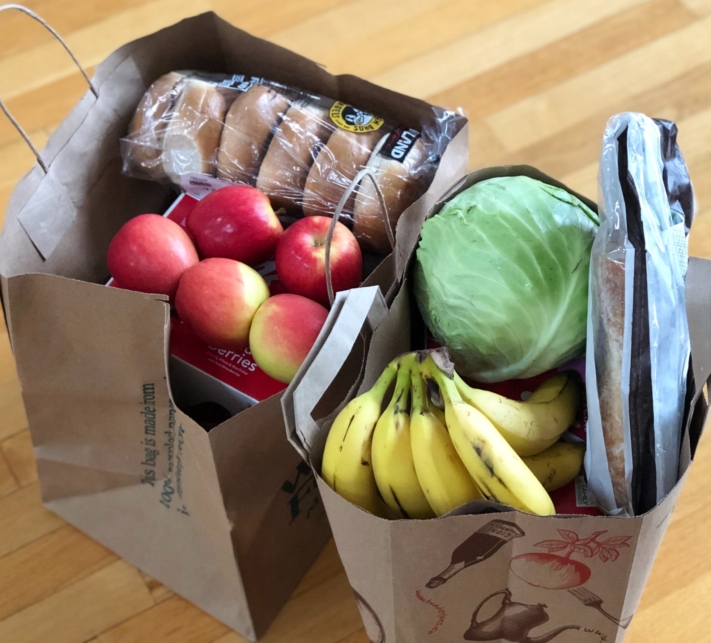
Bei einem gezielten Einkauf sparen Sie Geld und Zeit, weil Sie nur die Lebensmittel kaufen, die Sie wirklich brauchen.
Das klingt zu schön, um wahr zu sein? Wie viele Essenstrends kann natürlich auch Meal Prep nicht alle Probleme lösen. Neben den offensichtlichen Vorteilen gibt es auch negative Punkte, welche Sie beachten sollten, bevor Sie sich dem Thema Meal Prep annehmen.
Die Nachteile:
- Eingeschränkte Haltbarkeit: Manche Lebensmittel und Gerichte (z. B. Salate) sind nicht für lange Lagerungen geeignet, da sie schnell schlecht werden, ihre Konsistenz oder ihren Geschmack verlieren.
- Macht unflexibel: Ein spontanes Essen im Restaurant kann Ihren Essensplan durcheinanderbringen. Im schlimmsten Fall müssen Sie verdorbene Lebensmittel oder vorgekochte Portionen wegwerfen.
- Eintönigkeit: Selbst auf Lieblingsgerichte hat man nicht immer Lust, wenn man Sie den dritten Tag in Folge isst. Unten erfahren Sie aber, wie Sie Abwechslung in Ihr vorgekochtes Essen bringen können.
- Lagerung kostet: Wer für mehrere Tage vorkocht, braucht genügend Platz in seinem Kühlschrank oder Gefrierfach und zudem die richtigen Aufbewahrungsmittel.
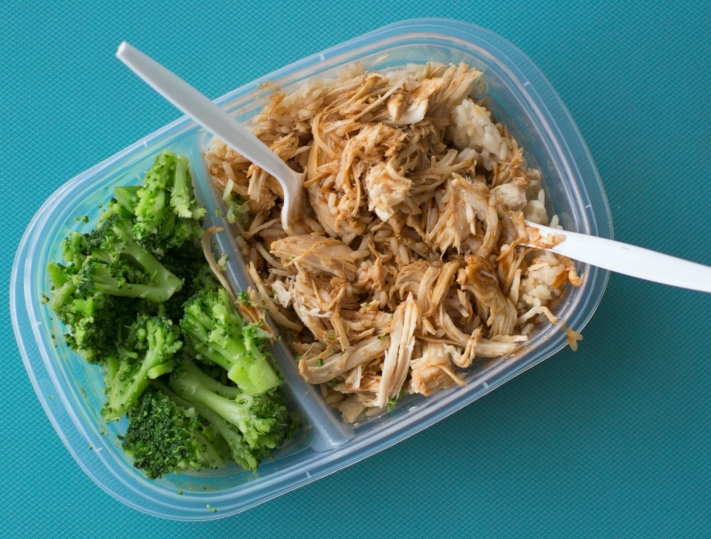
Seien Sie kreativ und sorgen Sie für möglichst abwechslungsreiche Gerichte.
Schritt für Schritt zum perfekten Meal Prep
Damit die Mission Meal Prep ein Erfolg wird, benötigen Sie zunächst einen Essensplan. Die folgenden fünf Schritte helfen Ihnen beim Ablauf.
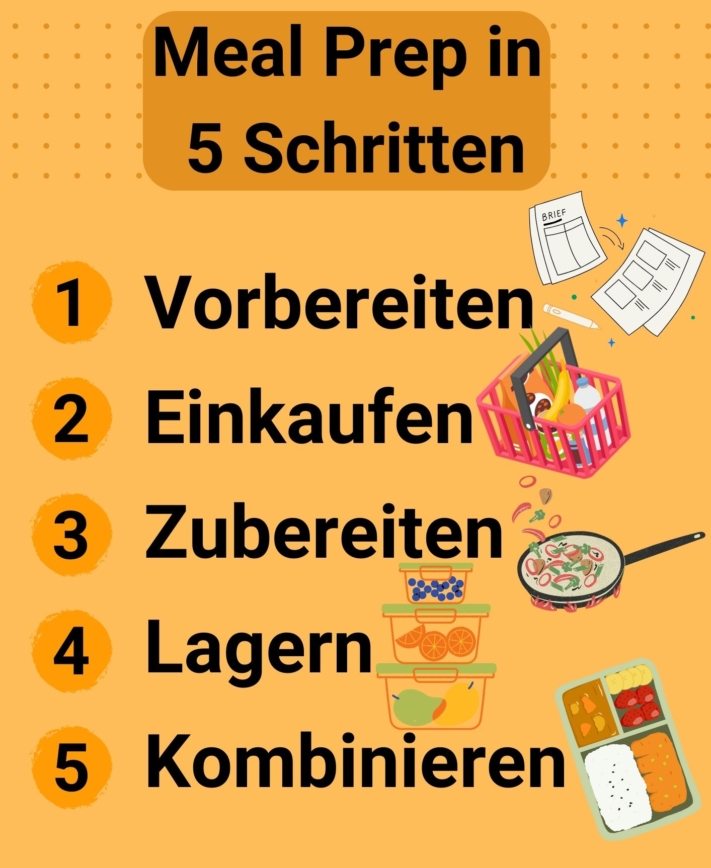
Mit der richtigen Planung gelingt Meal Prep auch ungeübten Köchen.
1. Vorbereiten
Stellen Sie sich zunächst die Frage, für wie viele Tage Sie vorkochen möchten. Für Meal Prep Beginner bietet es sich an, erstmal für zwei oder drei Tage zu kochen, um sich an den Aufwand zu gewöhnen und langsam eine Routine zu entwickeln. Suchen Sie nach passenden Meal Prep Rezepten. Diese sollten Nahrungsmittel enthalten, welche Sie gerne essen. Außerdem ist die Zusammensetzung Ihres Gerichts wichtig. Für eine ausgewogene Ernährung sollten Ihre Mahlzeiten Folgendes enthalten:
- Proteine: Gute Quellen sind Fleisch, Fisch und Milchprodukte, aber auch Tofu und Hülsenfrüchte.
- Gemüse: Am besten frisch und saisonal, aber auch tiefgekühlt enthält es viele Vitamine und Nährstoffe.
- Kohlenhydrate: Dafür eignen sich vor allem Kartoffeln, Reis und Nudeln.
- Fette: Pflanzliche Fette wie Olivenöl enthalten mehr ungesättigte Fettsäuren und sind daher gesünder als tierische Fette.
2. Einkaufen
Die Rezepte sind ausgewählt, jetzt fehlen Ihnen noch die Zutaten. Listen Sie auf, was Sie in welchen Mengen brauchen, damit Sie während Ihres Einkaufs den Überblick behalten. Außerdem hilft Ihnen eine Einkaufsliste dabei, nur die Lebensmittel zu kaufen, welche Sie für Ihre Mahlzeiten wirklich benötigen. Achten Sie darauf, frische und leicht verderbliche Ware erst dann zu kaufen, wenn Sie sie sofort weiterverarbeiten können.
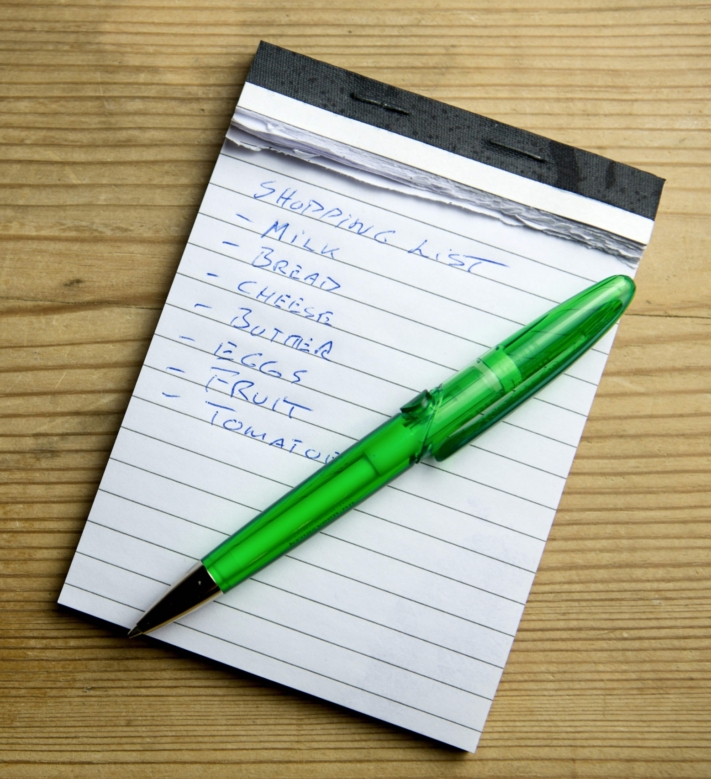
Eine Liste hilft Ihnen, Ihre Einkäufe zu überblicken.
3. Zubereiten
Nun folgt der aufwändigste Part des Meal Prep. Um alle Ihre Lebensmittel zuzubereiten, nehmen Sie sich genügend Zeit, am besten zwei bis drei Stunden an einem Tag Ihrer Wahl. Braten, kochen, dünsten oder backen Sie die Zutaten getrennt, da sie unterschiedliche Garpunkte haben und sonst zum matschigen Einheitsbrei werden. Neben den Hauptmahlzeiten können Sie zusätzlich kleine Snacks für zwischendurch vorbereiten. Das könnten zum Beispiel selbstgemachte Müsliriegel sein.
4. Lagern
Damit die vorbereiteten Zutaten lange genug frisch bleiben und ihren Geschmack behalten, sollten Sie diese getrennt aufbewahren. Für Meal Prep eignen sich zum Beispiel spezielle Boxen mit Trennwänden. Die Lebensmittel sollten Sie in luftdicht verschließbaren Behältern aus Glas oder robustem Plastik aufbewahren. Lagern Sie die vorbereiteten Gerichte bevorzugt im Kühlschrank oder frieren Sie sie ein.
5. Kombinieren
Der letzte Schritt des Meal Prep ist der leichteste. Nehmen Sie die vorbereiteten Komponenten aus dem Kühlschrank und stellen Sie nach Belieben ein Gericht zusammen. Verschiedene Kombinationen sorgen dabei für geschmackliche Abwechslung. Verpacken Sie Ihre Kreation sicher für den Transport oder erhitzen und genießen Sie direkt Ihr gesundes und leckeres selbstgekochtes Essen!
Beispiel für einen Meal Prep Wochenplan
Ein Beispiel für einen Essensplan soll die Funktionsweise von Meal Prep noch einmal illustrieren: Sie haben sich für eine Woche vier Gerichte ausgesucht, die alle Gemüse, Kartoffeln und/oder Reis enthalten. Das Ofengemüse bildet die Grundlage für alle Gerichte und könnte beispielsweise aus Paprika, Zucchini, Karotten, Kichererbsen, Zwiebeln und Pilzen bestehen.
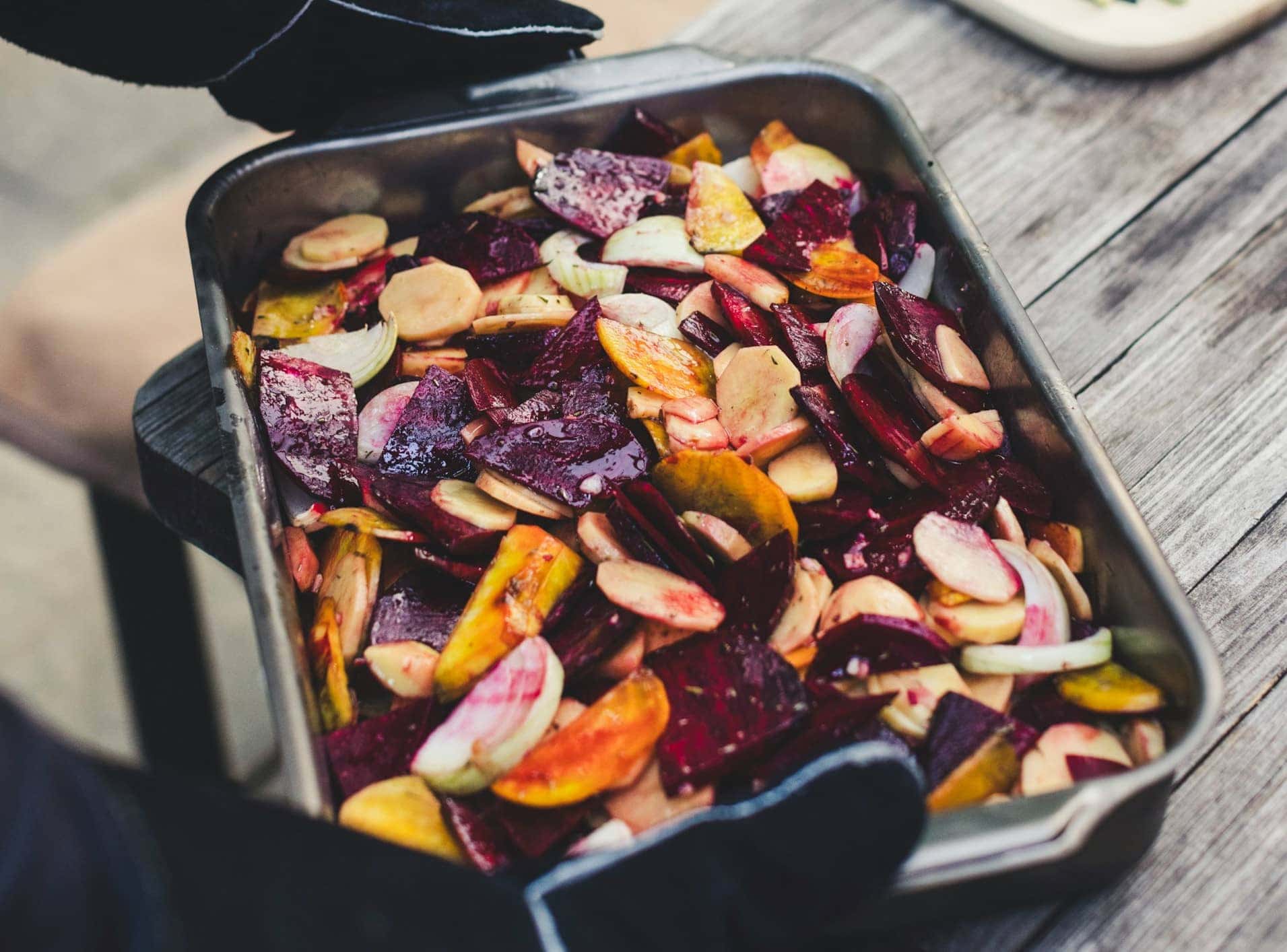
Ofengemüse eignet sich hervorragend als Basis für verschiedene Gerichte.
Am Sonntagabend nehmen Sie sich also circa zwei Stunden Zeit, um das Gemüse zu waschen, zu schneiden und in einer großen Auflaufform zu backen, während Sie separat die Kartoffeln und den Reis kochen. Lassen Sie die Komponenten abkühlen und füllen Sie alles in saubere Boxen oder Gläser. Aus den vorbereiteten Zutaten können Sie anschließend folgende Gerichte kombinieren:
- Montag: Ofengemüse mit Kartoffeln (+ Tomatensoße und Kräuter der Provence)
- Dienstag: Chop Suey mit Reis (+ asiatische Gewürze wie Ingwer und Sojasoße)
- Mittwoch: Ratatouille mit Kartoffeln (+ Kraftbrühe und Muskat)
- Donnerstag: Gemüse-Curry mit Reis (+ Kokosmilch und Currypulver)
- Freitag: Überbackenes Gemüse (alle Reste + Käse)
Durch die verschiedenen Gewürze verleihen Sie dem Gemüse an jedem Tag einen anderen Geschmack. Nach Ihrem eigenen Gusto können Sie die Gerichte natürlich mit Fleisch und weiteren Zutaten ergänzen.
Vorlage für Ihren Meal Prep Wochenplan
Damit Sie Ihre Lieblingsrezepte immer griffbereit haben, können Sie eine Liste mit allen Meal Prep Gerichten anlegen und festhalten, auf welchen Webseiten Sie welches Gericht gefunden haben. Die kostenlose Vorlage von SeaTable eignet sich bestens, um Ihre Meal Prep Rezepte übersichtlich zu ordnen.
Tragen Sie einfach den Tag ein, an dem Sie ein Gericht das nächste Mal kochen wollen, und erstellen Sie sich im Kalender immer wieder neue Meal Prep Wochenpläne. Laden Sie Fotos hoch und lassen Sie sich Woche für Woche von Ihrer Galerie an möglichen Gerichten inspirieren. In zwei weiteren Tabellen können Sie alle Zutaten in einer Einkaufsliste erfassen und die Nährwerte Ihrer Lieblingsgerichte vergleichen.
Wenn Sie SeaTable für Ihren Meal Prep Wochenplan nutzen möchten, registrieren Sie sich einfach kostenlos. Die entsprechende Vorlage finden Sie hier. Löschen Sie die Beispielrezepte und passen Sie den Essensplan nach Belieben an Ihre Bedürfnisse an.

